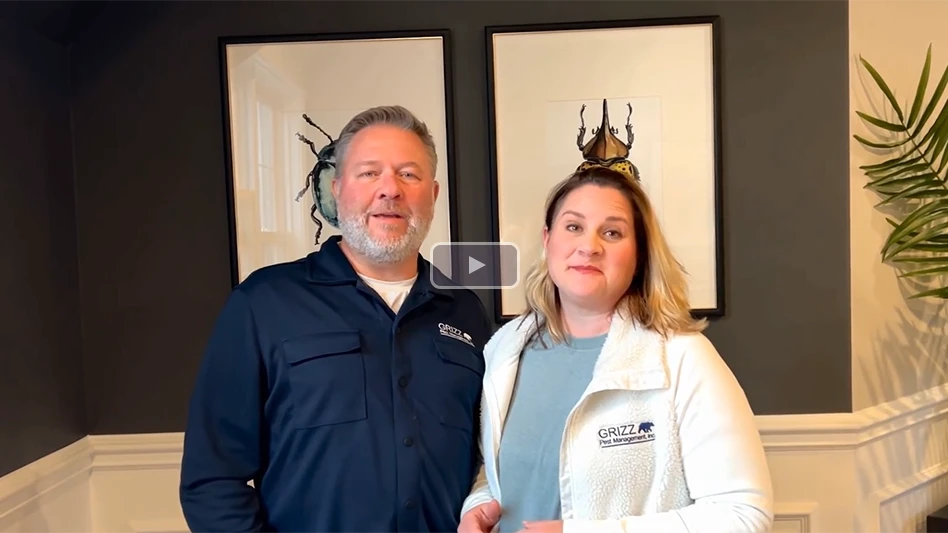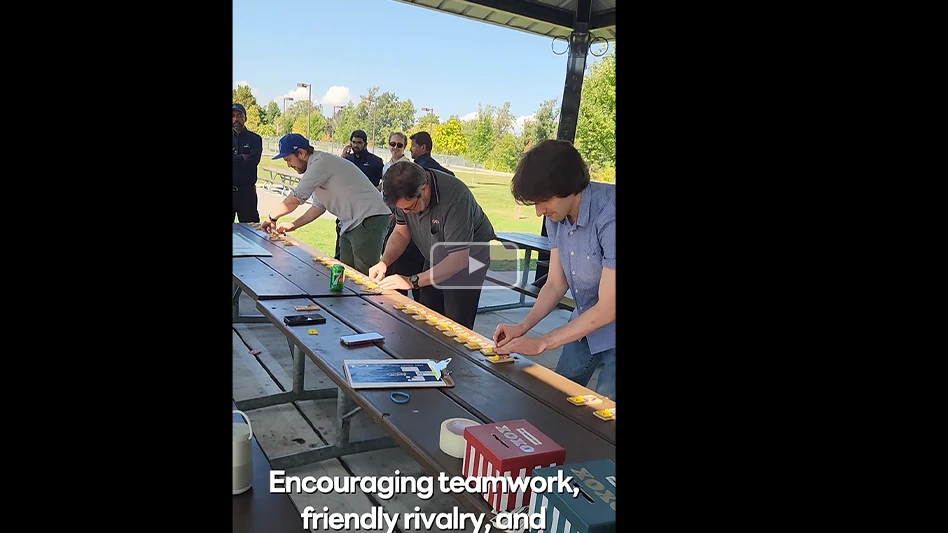If you were a cockroach, where would you hide?
One of the best ways to beat any opponent is to understand their tactics and set up your offense accordingly. To this end, cockroach baiting has become a preferred tool for pest management in processing plants — because it plays on the cockroaches’ natural behavior "tactics" to provide an effective method of elimination when used as part of a complete integrated pest management program.
As opposed to residual insecticides which require a cockroach to randomly contact the residue, said DuPont Global Product Development Manager Clay Scherer, baits are designed to be very attractive to the cockroach and take advantage of their innate feeding behavior. In addition, the baits are not immediate kill, so the cockroach’s natural tendency to scurry back to harborage and share or exchange the bait with others in the population extends the toxic impact of the bait.
Not only do the cockroaches carry the bait to an area which may be difficult to reach, Scherer explained, they also can expose other members of their population to the toxicant through their behaviors. These can include direct contact, in which residue passes from the skin of the feeder, and secondary feeding, as it is not uncommon for cockroaches to feed on one another’s feces or vomit.
In addition, baits are well-suited for processing plants because of their long residual life, said Bayer Environmental Science Marketing Manager Gordon Morrison. Applications can be less frequent than sprays, meaning less pesticide is used in the plant. And although label directions must always be consulted and followed, crack and crevice bait treatments and bait stations can be used just about anywhere that cockroaches are a problem, because, when properly placed, the toxicant is inaccessible.
Baits pose little risk to food and workers, concurred BASF Market Development Specialist Bill Kolbe. "There is virtually no exposure because it is placed in cracks and crevices and wall voids." Bait stations are just as secure because the bait is enclosed and can be placed even on vertical surfaces without the bait becoming dislodged.
Sanitation. Placement, as well as plant sanitation, are also critical for program efficacy. "Cockroaches are opportunistic. They’ll take advantage of what’s close," Morrison said. This means that not only must baits be placed in the vicinity of the cockroaches, but high sanitation levels must be maintained to reduce or eliminate competitive food sources.
Important to any integrated pest management program, sanitation is particularly important in a processing plant because of the potential amount of alternative food which a bait would have to outperform to be effective.
While an important aspect of bait treatments is its inaccessibility, thus its invisibility, "QA should demand that exact placement be documented," Kolbe said. Such mapping or listing of all placements — required by some states — can also increase program efficacy, as employees can be cautioned against disturbing or moving any baits (such as stations), and sanitation crews made cognizant of bait placements when cleaning. Although the bait is placed into cracks, crevices and equipment voids, if exposed to heavy cleaning solutions, it can become less attractive to the cockroaches.
This is one reason PMPs may choose to use bait stations, which provide protection both for and of the bait. Contained in small, plastic bait trays which can be inconspicuously attached to walls, equipment or flooring, the bait is not accessible to humans and can be more easily protected from environmental elements.
Periodic clean-up and replacement of baits also is recommended. Although baits have a long residual life, they will eventually lose their efficacy. Baits subject to a great deal of moisture can also become moldy, while others can dry out and become useless. Depending on the bait and conditions, clean-up can be accomplished by scraping, crack and crevice cleaning, pressure washing, steam cleaning or simply removing or changing bait stations.
Through inspection of bait consumption, the stations can also provide an element of monitoring for cockroach presence, Morrison added, explaining, "Baits are one of the best ways to monitor for and identify cockroach activity."
Although baits can be very effective tools in plant pest management programs, they should be considered only one tool in a complete arsenal. "Many control solutions are available for roaches and it’s always good to use a variety of tools," said Cisse Spragins, CEO, Rockwell Labs Ltd. "Using multiple tools is more effective, can save money and helps prevent resistance problems from developing in the first place." "Cockroach baits, by themselves, are not silver bullets," added Kolbe. Used alone, they are unlikely to solve a pest problem. "Insect growth regulators and other pesticide formulations are also often important parts of a control strategy for food processing."
Regular communication of pest problems or conducive conditions both among the plant personnel and with the pest control provider is also critical to effective cockroach management. Scherer recommends a communication plan and record-keeping be made a part of any pest control contract. This would include regular discussion with the quality assurance manager, to set and review the program, and with floor personnel who work with the equipment and conduct sanitation. "They can give the [PMP] the most insight as to where cockroaches are," said Kolbe. "They are probably the technician’s best friends."
Such information is important not only for creating and maintaining an effective pest management plan, but also for keeping costs in line for the plant. When the pest control provider can check in at an account, review a logbook for any cockroach sightings, then have a rapport with managers and workers to be told of any other issues, "it helps the PMP concentrate their efforts," Morrison said. "What that adds up to for the PMP is increased efficiency and product usage."
"The key for food processors is to look at their cockroach plans and make sure they fall along the same lines as their HACCP plan," Kolbe said. Pest management should, in effect, be a subset of HACCP, with an analysis conducted to determine critical control points for baiting.
Thus, the experts agreed, inspection is a critical aspect of any bait program. "You have to have a very active inspection plan so cockroach activity and presence can be identified before it gets out of hand," Scherer said.
"You really need to look not just at equipment and areas you can see, but be able to look into equipment," Kolbe added. Thus, his guidance is to ask yourself, "If I were a cockroach, where would I hide?"
Editor’s note: Please see pages 64-65 for a cockroach bait guide. Suppliers, if you have a product you’d like to have featured in a future issue of PCT magazine, please e-mail a press release and a high-resolution photo to jdorsch@giemedia.com.
*****
BASF Pest Control Solutions
BASF Pest Control Solutions offers a range of cockroach bait products:
• Prescription Treatment brand Advance Cockroach Gel Bait provides quick kill of German roaches and features the Reduced Risk AI dinotefuran.
• Prescription Treatment brand Avert Dry Flowable Cockroach Bait provides control through ingestion as well as contact.
• Prescription Treatment brand P.I. Contact Insecticide provides quick kill and flushing of roaches and features the botanical-based active ingredient pyrethrins.
*****
Bayer Environmental Science
Maxforce FC Magnum Roach Killer Bait Gel from Bayer Environmental Science features five times the active ingredient, fipronil, so cockroaches no longer need to consume the bait to die; they simply need to touch it. Magnum is made with a Simply Irresistible bait matrix that attracts even the most finicky cockroaches, Bayer ES says.
Because roaches do not need to consume the bait to die, PMPs can target high-traffic areas to increase exposure and trigger a contact kill. Even as the bait ages, it retains a high level of moisture and remains potent.
*****
DuPont
DuPont Advion cockroach gel bait works well on all prevailing cockroach species, even gel-bait-averse ones, the company reports. The formulation for Advion was developed to specifically overcome gel bait-aversion behavior. Advion combines a proprietary, high-consumption bait matrix with a high-performing, non-repellent active ingredient, according to DuPont. DuPont Advion also has a favorable environmental profile and can be used in a wide variety of application sites, the company says.
A slight delay in mortality caused by the active ingredient in Advion allows cockroaches to consume the bait and return to the harborage site to contaminate other cockroaches, resulting in a significant reduction in infestation levels.
*****
Green Dragon Roach Kill
Green Dragon Roach Kill, manufactured by Green Dragon Pest Solutions, has attained OMRI Listing. Green Dragon Roach Kill is a natural enemy for insects such as roaches, ants and silverfish and it also complies with USDA organic standards, the manufacturer reports.
Since the pest management industry considers baiting to be effective and environmentally sound, the firm says meeting OMRI’s stringent requirements separates Green Dragon Roach Kill from a number of competing insect baits on the market.
*****
MGK
Vendetta Cockroach Gel Bait is a high-performance gel bait technology specially formulated to be highly attractive and effective — even on the toughest, "hard-to-kill" cockroach populations, the company reports. Vendetta’s balanced nutrient matrix is designed to be highly palatable and attracts both bait-averse and non-averse cockroaches. Vendetta provides consistent performance over a wide range of dietary conditions. Easy to handle and apply, Vendetta dispenses smoothly and easily, is not runny or messy, is free of nut proteins, is stable in high heat, and fits standard bait guns, the company says.
*****
Nisus Corporation
Niban now comes packaged with two other types of baits. The new Triple Shot bait station includes three separate bait compartments containing a borate-based insect buffet: a liquid (Terro-PCO), a granular (Niban) and a granular gel bait (Persuade). These large-volume stations cover a wide variety of pests including cockroaches, and are easy to use indoors or out. Insects can change their nutritional requirements for proteins, carbohydrates and liquids daily. The three baits cover these nutritional needs and use borates as the active ingredient for minimal environmental impact.
Rockwell Labs Ltd
InVict Gold Cockroach Gel from Rockwell Labs Ltd is a new highly effective bait for quickly controlling cockroach infestations, including bait-averse roaches, the company says. The gel contains 2.15 percent imidacloprid for extremely rapid control and proven secondary kill. The unique blend of multiple food ingredients is highly attractive and different from other baits, so it is ideal for bait rotation and combating aversion, Rockwell Labs reports. InVict Gold Cockroach Gel is also more economical with 45 percent more bait per box, the company says. Each box contains five 35-gram tubes.

Explore the July 2010 Issue
Check out more from this issue and find your next story to read.
Latest from Pest Control Technology
- Termite Control Sales Strategies
- NPMA Announces ELP Class of 2025
- Termite Control Tools and Equipment for PMPs
- Choe Reviews Drywood Termite Geographical Hotspots, Latest Research Findings
- Mosquito Squad Announces Rebranding to Mosquito Squad Plus
- Pest Control Equipment: If it’s Critical, Back it Up!
- In Memoriam: Marybeth Wonson
- In Memoriam: Layton Word





